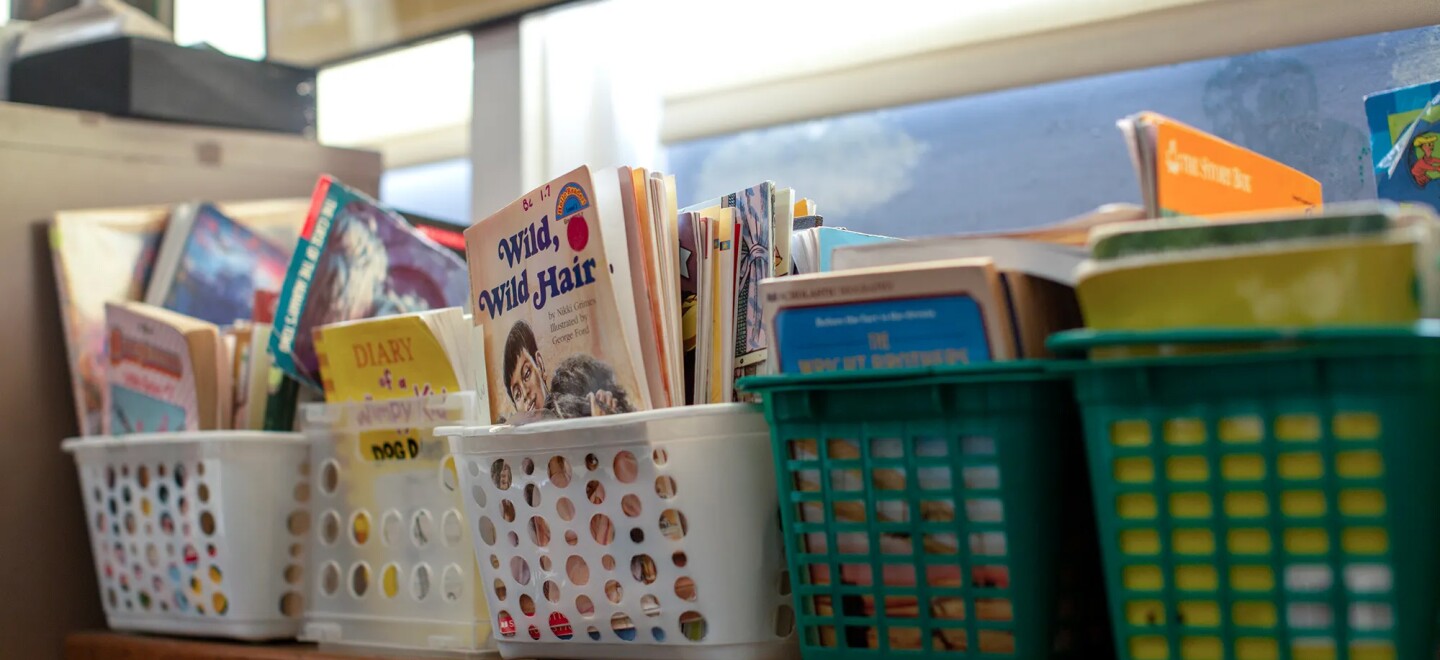California’s $53 million investment in teaching its youngest and lowest-performing students to read has shown dramatic — and relatively fast — results, researchers at Stanford have found.
In a study released Sunday night, researchers at Stanford’s Graduate School of Education found that the percent of third-graders in the program who met or nearly met the state reading standards rose 6 percentage points, compared to students at similar schools.
“This study shows we can eradicate illiteracy at warp speed,” said Mark Rosenbaum, an attorney behind the lawsuit that spurred the state’s Early Literacy Support Block Grant program. “I wasn’t surprised at the results. But I was impressed with the speed, especially during a pandemic.”
The program came about in 2020 as part of a settlement of a lawsuit filed by Morrison Foerster and Public Counsel, a nonprofit public interest firm based in Los Angeles. Far too many students in California, especially those who are Black, Latino and low-income, were not learning to read, with disastrous results, the lawsuit said. Students who can’t read well by fourth grade are significantly more likely to drop out of school and engage in risky behavior as adolescents, research has shown.
The lawsuit settlement called for California to spend $50 million on literacy programs at the state’s 75 worst-performing elementary schools. At most of these schools, fewer than 10% of students – in some cases, less than 3% – met the state’s reading standard prior to the pandemic, compared to about half of students statewide. Most of the money went toward training teachers, hiring classroom aides and purchasing books. But districts had some leeway to tailor funding to their own unique needs.
Most districts adopted phonics-based curricula inspired by the so-called “science of reading,” an approach to literacy focused on language comprehension and phonics, or matching sounds to letters. Until recently, most schools in California used a “balanced literacy” approach, which includes phonics but also encourages students to recognize whole words by sight.
“Reading wars” over various approaches to teaching literacy have raged for years, but this study is among the first to show distinct before-and-after results, comparing similar schools over time, boosting the idea that the science of reading is a more effective technique.
“The takeaway is that targeted, well-designed science of reading interventions can make a big difference,” said Sarah Novicoff, a doctoral student who worked on the study. “It demonstrated that efforts like this are worth pursuing.”
Becky Sullivan, English language arts director at the Sacramento County Office of Education and coordinator of the block grant for all the targeted schools, said she knew within months that the program was working, based on initial testing that showed 95% of students were making progress.
“I’m really proud of all the schools and teachers who put in the hard work. It shows,” Sullivan said. “We’ve impacted the lives of 15,000 students, from the north end of the state to the south.”
‘Literacy is a moral imperative’
Joshua Elementary in Lancaster, in northern Los Angeles County, was among the schools singled out in the grant. Five years ago, Joshua was one of the lowest-performing schools in the state, if not the country, with fewer than 3% of third graders meeting or exceeding the state’s Smarter Balanced reading standards. Using grant funds, the district tossed out part of its previous literacy curriculum and adopted a new one focused on the science of reading. Teachers were trained, children got new reading materials, and tests were given regularly.
Last year, the number of third-graders meeting the standard nearly doubled, and district officials expect the numbers to keep climbing.
“Our data is still low, but we are seeing vast improvements,” said Krista Thomsen, the district’s director of curriculum, instruction and assessment. “What we are seeing now is teacher buy-in, because they’re seeing success teaching kids how to read. … The entire staff understands that literacy is a moral imperative.”
“Students were running up to me saying, ‘Mr. Humphrey, want to hear me read?’ The glimmer in their eyes, the smiles on their faces. I thought: That’s why we’re doing this.”ROBERT HUMPHREY, FORMER PRINCIPAL AT BEL AIR ELEMENTARY IN BAY POINT
Bel Air Elementary in Bay Point, in Contra Costa County, used its grant money — $1 million over three years — to hire reading specialists to work with students in small groups. The school also brought in a new phonics-based curriculum, closely tracked student progress and trained teachers.
The results were almost instant, said Robert Humphrey, Bel Air principal at the time.
“Students were running up to me saying, ‘Mr. Humphrey, want to hear me read?’ The glimmer in their eyes, the smiles on their faces. I thought, that’s why we’re doing this,” Humphrey said. “It’s been an absolutely amazing turnaround.”
He also noticed a decline in behavior problems and an overall improvement in morale, among teachers as well as students. “Walking around campus, you could feel the difference,” he said.
He is worried, however, about what happens when the grant money runs out next year. He’s looking at ways to continue funding the reading specialists.
More grant money is available through the California Department of Education’s new Literacy Coaches and Reading Specialists program, which will bring $500 million to about 800 schools statewide. The program, authorized by Assembly bill 181, was started in 2022 and is available to any elementary school that has an enrollment that’s more than 95% low-income, English learner or foster youth.
Still, that leaves thousands of schools without funding to train teachers and buy materials to implement the science of reading. Rosenbaum said that the results from the Stanford study are too promising to let the initiative fade away for lack of funding.
“It should be expanded throughout the country, at every school,” he said. “And if it’s not, we’ll just file more lawsuits.”







